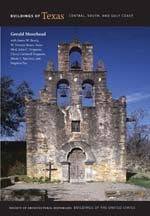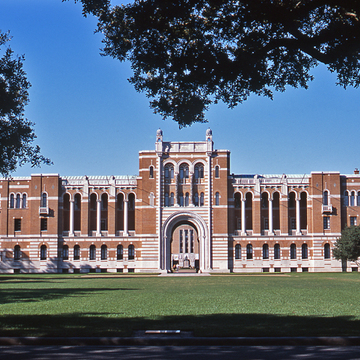The exoticism of Cram's choice, still vividly apparent in Lovett Hall, Rice's administration building (named for Rice's first president) , seems inversely related to the bleak prospect of monotonous flatness that historical images present of the campus site. As can be seen today, Cram not only invented a bold and powerful architecture to give Rice University a distinctive identity, he also invented the landscape in which it is set. Cram planted live oaks, the totemic Southern tree, in rows on the flat coastal plain. Ideologically the live oaks construct “Southernness.” Phenomenally, they construct a spatial armature that gives rhythm, measure, scale, direction, and depth to the landscape, enabling it to frame the remarkable buildings Cram and his associates designed.
The administration building is three hundred feet long, but only fifty feet wide. President Lovett insisted that the building be thin in plan in order to ventilate efficiently in Houston's humid atmosphere. The building is surfaced in a combination of colorful materials: pink Texas granite, gray Ozark marble, and rose-colored Houston brick.


